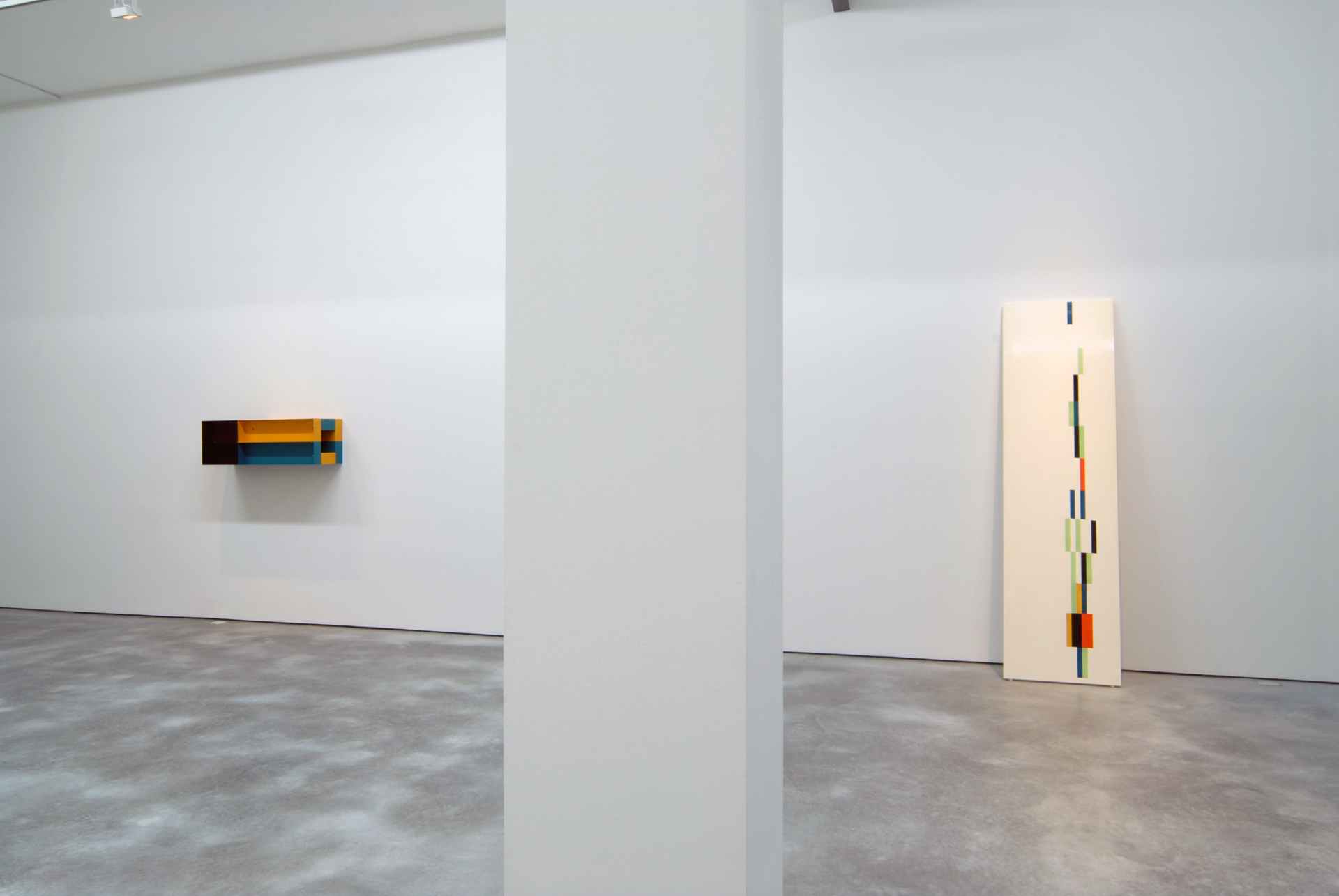Galería Cayón presented, in December 2013, an exhibition that brought together for the first time two of the most important American artists of the second half of the last century.

Alejandro Otero (El Manteco, Venezuela 1921-Caracas, Venezuela 1990) was the first Venezuelan artist of the generation born in the early nineties who knew first-hand what was happening in the creative environment of immediate postwar Paris. Otero settled in the French capital in 1945 and the following year began to paint his famous series Cafeteras, considered the first abstract paintings (or, rather, on the way to abstraction) painted by a Venezuelan artist.
In 1950, on a trip to the Netherlands, he happened to know the work of Piet Mondrian in depth and made the Orthogonal collages, in which a weft of thick vertical and horizontal color strips were superimposed and intertwined with each other creating a situation space that has to do in a special way with the last Mondrian established in New York a few years before. A short time later, in 1955, the Coloritmos appeared, extreme simplifications of the orthogonal postulates, in which every structure that was a sort of scaffolding of the work (characteristic of the Orthogonal) has disappeared to allow the color, arranged after a deep spatial analysis Through small sketches and models, float in space or walk from side to side on the support, almost always touching the ends of the wood. Coloritmo I (1955) was acquired by the MoMA in New York in 1956, the year in which Otero represented his country at the Venice Biennale. The series, abandoned in 1960, was retaken with the name of Planks as of 1973, and always with the duco technique that gives colorhythms and planks an air of industrial execution without the presence of the artist’s hand, insisting on the importance of color. in itself, out of any referential context.



Donald Judd (Excelsior Springs, Missouri, USA 1928-New York, USA 1994) is one of the most important so-called minimal artists. The exhibition focused on one of the lesser-known sets of works by the artist; the multicolored works, made up between 1984 and 1992.
Using between four and eight different colors per piece, these works allowed him an investigation not only on the effect of industrial color but, and perhaps more importantly, its application in a three-dimensional object and its relationship with the different elements that make up the work. Until 1984, Judd had not used more than two colors together in a sculpture.
Donald Judd’s intention was not; “[Make] harmonious combinations, an old conception easy to ignore, or provoke non-harmonious reactions, which are even more difficult to ignore. What he wanted was for all the colors to be present at the same time ”.
The exhibition Donald Judd multicolored + Alejandro Otero tablones coincided with the exhibition Donald Judd: The Multicolored Works, which was held at the Pulitzer Foundation for the Arts, St. Louis, Missouri, USA (www.pulitzerarts.org), and which was curated by Marianne Stockebrand, who was director of the Chinati Foundation in Marfa, Texas, between 1994 and 2010.

